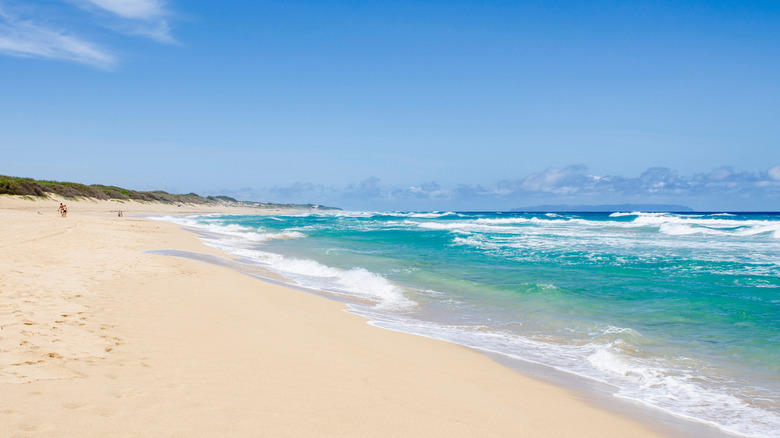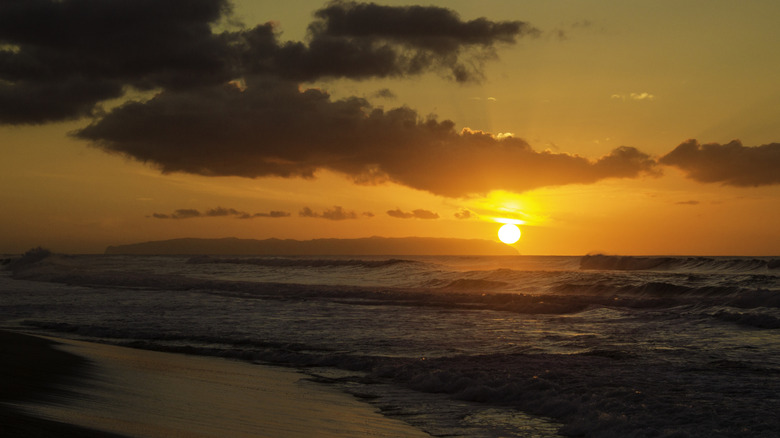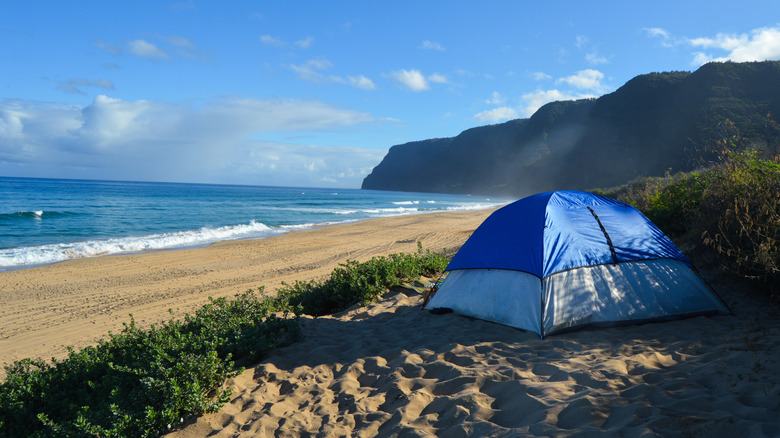This State Park Boasts The Longest Beach In Hawaii With White Sand And Pristine Waters
Hawaii is known worldwide for its breathtaking beaches, but few match the raw, untamed magic of Polihale State Park, a vast and remote beach on the western side of Kauai, which stretches nearly 17 miles along the coastline — making it the longest stretch of beach in the entire state of Hawaii. The beach starts where the Nā Pali Coast ends, and borders the Mana Plains. It's characterized by soft white sands, sky-blue waters which easily rival some of the clearest water in the world, and dunes reaching up to 100 feet. The beach is dotted with desert vegetation like kiawe trees and native cacti, and it offers unmatched sunset views over the Forbidden Island of Niihau — a sight that adds to its mystique.
The name Polihale carries a deep cultural meaning. While many interpret it as the "House of the Po," with Po referring to the underworld or afterlife, Hawaiian tradition holds that it is the place where souls depart for the afterlife, adding to the reverence of the area's majestic beauty. If you're building your Hawaii bucket list for underrated attractions you shouldn't miss, Polihale Beach is a perfect destination for solitude-seekers, beach lovers, and nature enthusiasts.
How to spend a day at Polihale Beach
Once you make it to Polihale, there's no shortage of things to do. With miles of shoreline, it's perfect for beachcombing or simply soaking up the stillness. If you're up for adventure, bodyboarding and surfing are possible when the conditions are right — but the beach is notorious for powerful waves, rip currents, and lack of lifeguards, so never go alone and always check with locals first. For those who prefer calmer water, head to Queen's Pond, a reef-protected area near the southern end of the beach, ideal for safe swimming and snorkeling.
Beyond the beach and waves, there's plenty to do for land lovers, too. Enjoy a picnic at one of the pavilions — grilling lunch with friends or lounging with a good book are simple joys here. Hikers can explore trails that pass by ancient Hawaiian sites, including the renowned Polihale Heiau (temples) at the northern end of the beach. Shore fishing is another favorite, and if you happen to visit between November and April, keep your eyes on the horizon — you just might spot humpback whales breaching offshore or dolphins dancing through the waves.
Watching the sunset at Polihale is a must-see experience. Facing west, the beach offers an open view of the sun sinking into the Pacific, lighting the sky in fiery pinks and golds. With no buildings or crowds, it creates perfect moments for photography. For the full experience, camp overnight and fall asleep to the fading light still glowing across the horizon.
What to know before visiting Polihale Beach
Your journey to Polihale begins with a flight into Lihue Airport (LIH), located on the eastern side of Kauai. Many airlines offer nonstop service. Flight times to Kauai can vary — from 5 to 12 hours on a direct route, depending on your starting point. From Lihue, it's just over an hour drive (about 36 miles) to the park entrance, following Highway 50 west past Hanapēpē and Waimea. The last 5 miles are along an unpaved road, which can be rough after rain, so a four-wheel-drive vehicle is highly recommended. The road may seem challenging, but be cautious, drive slowly, and avoid the deep sand areas near the beach.
As for accommodations, camping is available right at Polihale. Camping requires a permit, which can be reserved online through the Hawaii State Parks website. Costing $20 per night for up to 10 people who are Hawaii residents and $30 for up to 10 non-residents. Children aged 2 and under are free. Facilities include restrooms and cold showers, but no potable water — so pack plenty. While the beach is remote, there are places to stay nearby. Waimea Plantation Cottages, about 15 miles away, offer charming lodging that ranges from $293 to $669 depending on when you go. Alternatively, check out local guesthouses or vacation rentals in Kekaha, which is about 5 miles closer.
Polihale Beach sometimes closes due to flooding or storm damage, so be sure to check the current status on the official website and the weather conditions before going to avoid disappointment. From April to October, the sky is sunnier and the roads are drier. From November to March, expect wetter conditions and bigger, dangerous surf, but winter is the best time to spot whales. No matter when you get to Polihale Beach, you'll get to experience one of the most spectacular beaches in Hawaii.


